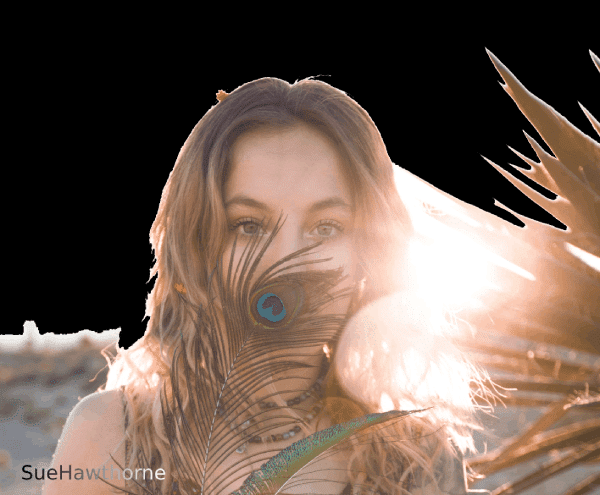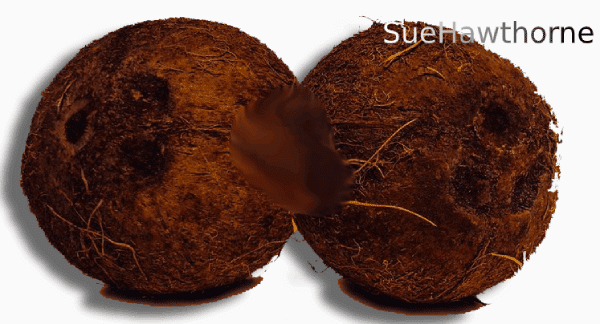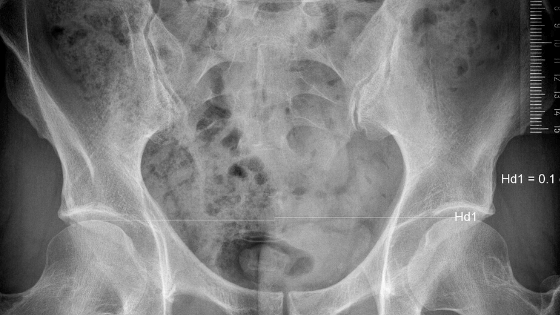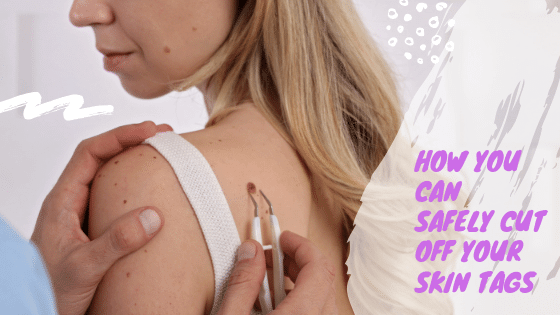Body hair usually starts to increase at the onset of puberty. This is when the body undergoes major physical changes that involve the growing of hair in certain parts of the body.
A mature adult has typically armpit hair, pubic hair, leg, and arm hair, among others. Conventionally, most people nowadays remove their body hair.
But some people still have body hair, and in some cases, they may not even be aware that removing it is a possibility.
So, how do you tell someone they need to get rid of body hair without embarrassing both you and them?

Contents
Don’t tell someone
In the majority of cases, it is none of your business if someone else wants to grow their body hair. They have made a decision not to remove it and that is their choice. And, you should respect that choice.
Unless it is affecting them hygienically or medically, then there should be no reason at all that you even attempt to tell them.
Even if it is a medical or hygiene issue, you should just present that as a suggestion rather than telling them to do it. And realistically there are VERY few occasions when hair removal would improve health or hygiene.
Telling Someone Without Embarrassment
Telling someone to shave or remove their body hair isn’t easy. It’s a very private issue and you will need to know this individual on a very personal level.
You need to use logic to convince a person that they need to shave. So, you need to furnish them with information regarding the benefits of removing body hair.
In the vast majority of cases, the only advantage of removing body is that in today’s society, body hair is seen by some as less aesthetically pleasing.

Tell Them They’ll Look Better
It’s clear that most people remove body hair because they want to look better. The removal of body hair also helps to make the cleaning process easier.
As a result, dirt and dead cells will easily get eliminated from the skin.
It also means that their skin will easily get nourished by body lotions.
So, you can start by telling them how much better their skin will look.
It Makes Tanning Easier
A shaved body makes tanning much easier. If you want to look cute and well-bronzed, shaving body hair is usually advisable. Advise the person on how lack of body hair means a good tan will be easier. It should be noted that a body that’s covered with hair is significantly more difficult to tan compared to exposed skin.

Eliminates body odor
It should be noted that hair in certain parts of the body contains secretion glands. Additionally, hair on private parts and underarms help to create the perfect breeding ground for bacteria.
Besides that, the vagina also produces secretions.
The combined effect of all these can lead to a nauseating body odor.
If you tend to perspire a lot, then sweat and hair can result in an unpleasant body smell. So overall, removing hair helps to minimize the chances of bacterial growth and reduces body odor.
However, realistically, if you practice normal hygiene then it shouldn’t make a difference.

It produces a Smooth and Nice Feeling
Removing body hair, especially by waxing, provides a smooth feeling. This can be pleasant for a partner.
However, a person shouldn’t do it for another individual. You need to tell them that the personal satisfaction they will experience will be great.
It makes it Easier to Wear Certain Outfits
Wearing swimsuits, short dresses, or sleeveless tops becomes a hard task if you have body hair. Naturally, women are conscious of their bodies. But having body hair on legs and armpits can easily draw unwanted attention.
By getting rid of body hair, females can move around feeling confident.
Additionally, this can help to improve sensual experiences.
Improving Facial Profile
Is your friend having a bushy brow line that is making them look clumsy?
You can advise them to get that fixed at a beauty salon.
Tell them how a well-shaped brow zone can help to improve their whole face.
Note: Eyebrow hair removal is a global trend. This is something that has been happening in the beauty industry for decades.
Females from all walks of life normally trim their eyebrows to give them a personalized and neater look.

It Helps to Enhance Feminine Beauty
Females, just like males, can grow body hair in areas such as the chest, breast, neck, legs, hands, and face. While body hair typically grows in these regions in small amounts in women, sometimes it may grow in excess.
If someone has excess body hair in these parts, you can convince them that the removal process can enhance their feminine beauty.
For Modesty Purposes
Research indicates that many people think body hair in women should only be limited to the pubic area. So, any slight display can highlight something different, including sensuality.
Body Hair Removal as a Form of Therapy
Some females don’t shave because of emotional turmoil. Stress and certain medical disorders can make a person neglect themselves. You can recommend the removal of body hair as a form of therapy.
Clean and smooth-textured skin helps to boost confidence. Generally, it can help to enhance the level of personal comfort.
Clean Hands and Legs are Attractive
Men love women with clean and well-shaved body hair. Normally, they consider them more attractive. So, you can tell a person that removing body hair can also get them special attention from men.
Improving the Skin’s Complexion
A lot of people don’t know that shaving can actually help to improve the skin’s complexion. Once you get rid of body hair, there are high chances that your skin will end up looking better.
So, you can convince someone that their skin’s overall health will actually improve and they will end up enjoying a bright and glowing natural complexion.
Reasons Why Some People Don’t Get Rid Of Body Hair
Removing body hair is considered conventionally sophisticated. That’s why modern women want to remove their body hair.
But, before you approach someone, understand that there are many reasons why they may not prioritize body hair removal.
It’s an Activity that takes Effort
To most females, shaving is a chore.
You need to create time and personal space in order to do this. Additionally, there is a strong reason to say that there is no point in doing it because the hair grows back within a couple of weeks.
It’s Painful
Some people fear the discomfort that comes with the removal of body hair.
Shaving, for instance, can result in cuts.
Other techniques can result in skin redness, inflammation, and irritation.
It should be noted that some of these techniques may require the use of a numbing cream or painkiller, e.g. threading. This is because they are extremely painful.
The Process is Time-Consuming
Research studies show that on average, females normally use 72 days to shave in their lifetime. Most females avoid the removal of body hair because the process is time-consuming.
The fast pace of modern life which is characterized by tight work schedules makes it harder for people to create time for themselves.
This means that some people may opt not to shave because there is so much that can be done within that bracket of time.
It’s Expensive
If you are shaving, you need to buy a pack of disposable razors.
This is because you will frequently be shaving.
Waxing and shaving creams are not cheap, either. You might need to use them alongside other essential oils.
Additionally, you need to have a moisturizer for your skin after you have removed the body hair. This is because body hair normally traps moisture which hydrates the skin.
So, once you have removed it, you need to get a good moisturizer to promote hydration. Lastly, some techniques such as laser treatment require expensive equipment and well-trained personnel.
Body Hair is Natural
It should be noted that body hair is natural. Human beings are mammals; hence they need body hair.
For instance, it’s crucial in regulating the body’s temperature. When the body temperature is hot, the hair usually stands to facilitate faster heat dissipation.
The converse of this process is also true.
When temperatures are very low, the hair lies down in order to trap air. This air is a good insulator hence it helps to prevent heat from leaving the body.
Reducing the chances of skin infections
Having body hair makes you less vulnerable to skin infections. For this reason, people with skin sensitivity issues or allergies often avoid removing their body hair.
The irritation, cuts, and redness that may arise from removal may flare up certain skin infections.
Protective Shield
Genital regions need to have pubic hair because it acts as a protective shield. Pubic hair is crucial in preventing access to bacteria and other forms of dirt.
Increased Production of Pheromones
A nice fragrance can be a huge turn-on. But did you know that some people keep their body hair to increase the production of pheromones?
It should be noted that the natural smell of some people can help them attract potential mates.
For instance, pubic hair normally enhances the production of pheromones thanks to their location.
Lower Chances of Skin Irritation
You notice that areas with high amounts of body hair normally have soft skin.
This is because the skin in those parts is sensitive.
So having body hair helps to reduce the chances of friction and irritation.
Additionally, these regions normally have coarser hair. This makes their removal even more difficult because you risk experiencing cuts and ingrown hairs.
Reducing Sweat
Both armpit and pubic hair can help to reduce sweat significantly.
We all want to smell nice throughout the day. But moving from one place to another as well as the external temperature, can lead to high production of sweat.
Body hair sometimes provides an effective and natural way of staying dry.
Sexual Sensation
There are females who find one of the best sexual feelings is getting your body hair stroked. Pubic hair, for instance, contains nerve endings. This means that slighting stroking it can heighten sexual tension and lead to better orgasms.
Breaking Societal Norms
Some females are not concerned with societal norms. Removal of body hair is a trend that these modern women adopt.
There is an expected idea that a woman needs to have a smooth, hair-free body. This is the only agreed form of beauty that everyone should follow.
Well, there are some people who are ready to change this conversation.
They simply want to exist as they are, without following or using societal norms. So, they don’t shave because they don’t want to.
Final Thoughts
There are many ways how to tell someone they need to get rid of body hair. However, it is usually not an easy process. This is because a person’s body belongs to them.
So whatever they choose to grow it, it shouldn’t be your concern. Sometimes, it may be seen as a rude way of intruding into a person’s personal space.
So, before you tell a person to shave their body hair, you need to consider your relationship.
Are you lovers, tight friends, or close relatives?
If so, do you frequently share personal or intimate information?
And if so, how can you tell them they need to get rid of their body hair?
The most important thing to do is to first ask them why they don’t remove their body hair.
It could be for medical reasons, negligence as a result of emotional turmoil, or lack of knowledge.
From there, you can proceed to tell them the benefits of getting rid of body hair.
Thereafter, you can recommend some of the most effective techniques to use. Make sure that you are polite and apologize beforehand for any offense.



































